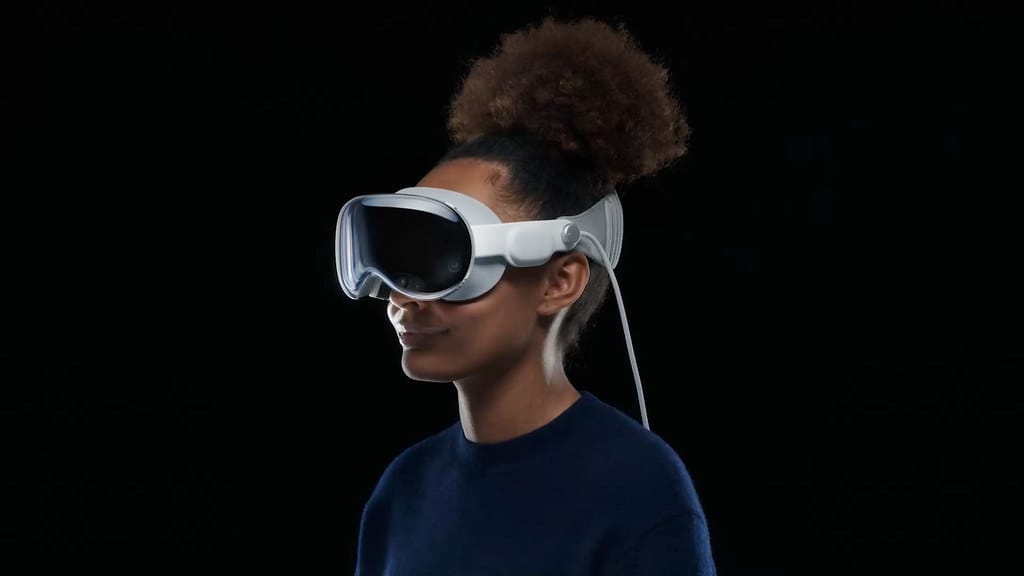Apple Vision Pro M4 Upgrade: The Next Chapter in Spatial Computing Arrives 2025
Apple's ambitious foray into spatial computing is set to accelerate with reports indicating the tech giant is developing an updated Vision Pro headset powered by the M4 chip, potentially launching as early as 2025. This development signals Apple's commitment to refining its mixed reality platform and addressing early adopter feedback from the current generation device.
The M4 Advantage: Performance Meets Efficiency
The integration of Apple's M4 chip into the Vision Pro represents a significant leap forward in processing power and energy efficiency. The M4, built on TSMC's advanced 3-nanometer process technology, delivers up to 25% better CPU performance and 25% improved GPU capabilities compared to the M2 chip powering the current Vision Pro.
For spatial computing applications, this translates to smoother real-time rendering of complex 3D environments, reduced latency in hand tracking and eye movement detection, and enhanced multitasking capabilities. The M4's improved Neural Engine will also boost machine learning tasks crucial for features like object recognition and spatial mapping.
Addressing Current Generation Limitations
The first-generation Vision Pro, launched in February 2024 with a $3,499 price tag, has faced criticism for its weight, battery life, and thermal management. Industry reports suggest the M4 version will tackle these concerns head-on.
The M4's superior power efficiency could extend battery life beyond the current 2-3 hour limitation, addressing one of users' primary complaints. Additionally, the chip's improved thermal design may reduce the headset's operating temperature, potentially allowing for a lighter cooling system and overall device weight reduction.
Market Position and Competition
Apple's accelerated development timeline reflects intensifying competition in the mixed reality space. Meta's Quest 3, priced at $499, has gained significant market traction, while companies like ByteDance's Pico and emerging players continue to pressure the premium segment.
The Vision Pro currently holds less than 1% of the global VR/AR market share, according to IDC research. However, Apple's strategy focuses on establishing a premium spatial computing category rather than competing directly on price with gaming-focused devices.
Software Ecosystem Maturation
The M4-powered Vision Pro will benefit from a more mature visionOS ecosystem. Since launch, Apple has expanded the platform with over 2,000 dedicated apps and improvements to core features like Personas and spatial video recording. The enhanced processing power will enable more sophisticated applications, potentially attracting enterprise customers in sectors like design, healthcare, and remote collaboration.
Apple's emphasis on seamless integration with existing iOS and macOS applications will likely accelerate with the M4 upgrade, making the device more appealing to professionals already invested in Apple's ecosystem.
Manufacturing and Supply Chain Considerations
Reports suggest Apple is working closely with suppliers to streamline production costs for the updated model. While the M4 chip itself may not dramatically reduce manufacturing expenses, improved yields and component optimization could enable Apple to offer the device at a more accessible price point.
Industry analysts predict the M4 Vision Pro could launch between $2,799 and $3,199, making it more competitive while maintaining Apple's premium positioning. This pricing strategy could significantly expand the addressable market beyond early adopters and enterprise customers.
Timeline and Market Implications
The early 2025 launch timeline positions Apple to capitalize on the holiday season and counter competitive pressures from Meta's expected Quest 4 release. This aggressive schedule suggests Apple views spatial computing as a critical growth area requiring sustained investment and rapid iteration.
The M4 upgrade also aligns with Apple's broader silicon strategy, showcasing the company's ability to leverage its chip expertise across product categories. This vertical integration provides Apple with significant competitive advantages in performance optimization and feature development.
Looking Ahead: The Spatial Computing Revolution
The M4-powered Vision Pro represents more than a spec upgrade—it's Apple's statement of intent in the spatial computing market. With improved performance, better efficiency, and a maturing software ecosystem, the updated device could mark the transition from experimental technology to mainstream adoption.
As Apple continues refining the Vision Pro experience, the M4 upgrade positions the company to capture a larger share of the growing mixed reality market while setting the foundation for future innovations in spatial computing. The 2025 launch will be a crucial test of whether Apple can transform its ambitious vision into a commercially viable platform that reshapes how we interact with digital content.
